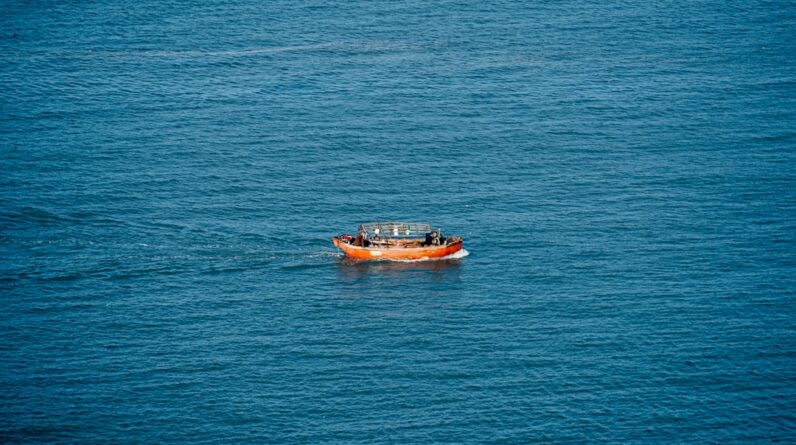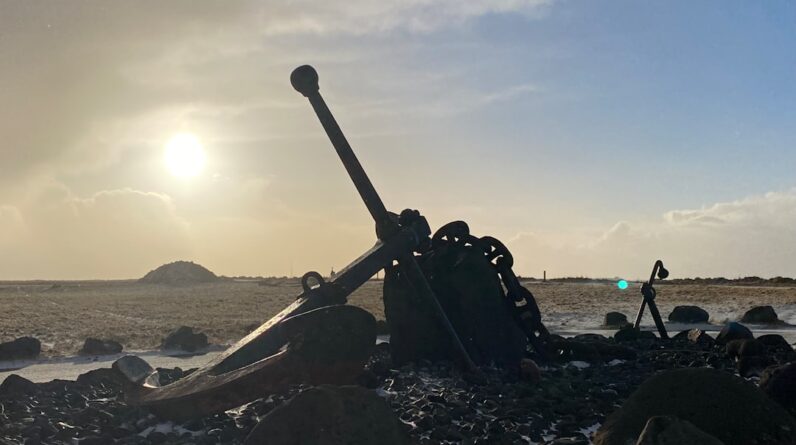
As you stroll along the shoreline, the beauty of the ocean waves crashing against the sand can be mesmerizing. However, beneath this picturesque scene lies a troubling reality: beach pollution. The impact of pollution on marine ecosystems is profound and far-reaching.
When you consider the various forms of waste—plastic bottles, food wrappers, and even hazardous materials—you begin to grasp the magnitude of the problem. These pollutants not only mar the natural beauty of beaches but also pose significant threats to wildlife. Sea turtles may mistake plastic bags for jellyfish, while seabirds can ingest harmful materials, leading to injury or death.
Moreover, beach pollution affects human health and local economies. Contaminated waters can lead to health advisories, restricting swimming and other recreational activities. This can deter tourists, impacting local businesses that rely on beachgoers for their livelihood.
As you reflect on these consequences, it becomes clear that addressing beach pollution is not just an environmental issue; it is a social and economic one as well. By understanding the impact of pollution, you can better appreciate the urgency of taking action to protect these vital ecosystems.
Key Takeaways
- Beach pollution has a significant impact on marine life and ecosystems, as well as on public health and safety.
- Planning and organizing a beach cleanup event involves setting clear goals, creating a budget, and securing necessary supplies and equipment.
- Recruiting volunteers and participants for a beach cleanup event requires effective communication, outreach, and engagement with the local community.
- Securing necessary permits and permissions for a beach cleanup event involves liaising with local authorities and obtaining clearance for the cleanup activities.
- Providing proper training and safety guidelines for volunteers is essential to ensure a safe and successful beach cleanup event.
Planning and Organizing a Beach Cleanup Event
When you decide to take action against beach pollution, the first step is planning a cleanup event. This involves selecting a date and location that will maximize participation and impact. Consider choosing a beach that is heavily affected by litter or one that serves as a popular destination for locals and tourists alike.
You might want to check local calendars to avoid conflicts with other events, ensuring that your cleanup garners the attention it deserves. Once you have a date and location in mind, it’s time to organize the logistics. You’ll need to gather supplies such as trash bags, gloves, and perhaps even refreshments for volunteers.
Creating a checklist can help you stay organized and ensure that nothing is overlooked. Additionally, think about how you will promote the event. Utilizing social media platforms, local community boards, and word-of-mouth can help spread the word and attract participants.
The more people you engage, the greater the impact your cleanup will have on the beach and its surrounding environment.
Recruiting Volunteers and Participants

Recruiting volunteers is a crucial aspect of organizing a successful beach cleanup event. You can start by reaching out to friends, family, and colleagues who share your passion for environmental conservation. Encourage them to bring their own friends along; this not only increases participation but also fosters a sense of community around the cause.
You might also consider partnering with local schools, universities, or environmental organizations that can help mobilize students and community members. In addition to personal networks, leveraging social media can significantly enhance your outreach efforts. Create an event page on platforms like Facebook or Instagram where you can share details about the cleanup, including its purpose, date, and location.
Engaging visuals—such as before-and-after photos of polluted beaches—can capture attention and motivate people to join your cause. Remember to emphasize the positive impact their participation will have on the environment and local community; this can inspire individuals to take action and contribute their time and effort.
Securing Necessary Permits and Permissions
Before diving into your cleanup event, it’s essential to secure any necessary permits or permissions from local authorities. Depending on your location, some beaches may require permits for organized events, especially if you expect a large turnout. Start by contacting your local government or parks department to inquire about regulations regarding beach cleanups.
They can provide guidance on what is required and help you navigate any bureaucratic hurdles. In addition to permits, consider reaching out to local businesses or organizations that may be interested in supporting your event. They might be willing to donate supplies or provide sponsorship in exchange for recognition during the cleanup.
Building these partnerships not only strengthens your event but also fosters a sense of community involvement in environmental stewardship.
Providing Proper Training and Safety Guidelines
As you prepare for your beach cleanup event, it’s vital to provide proper training and safety guidelines for all participants. Before the cleanup begins, gather everyone together to explain the objectives of the event and outline safety protocols. Make sure volunteers understand how to handle different types of waste safely—especially hazardous materials like broken glass or sharp objects.
Providing gloves and encouraging participants to wear sturdy shoes can help prevent injuries. Additionally, educate volunteers about the importance of environmental conservation beyond just picking up trash. Discuss how litter affects marine life and ecosystems, emphasizing that their efforts contribute to a larger movement toward sustainability.
By fostering a sense of responsibility and awareness among participants, you empower them to become advocates for beach conservation long after the cleanup is over.
Implementing Effective Waste Management and Disposal

Once your cleanup event is underway, effective waste management becomes paramount. As volunteers collect litter from the beach, it’s essential to sort waste into appropriate categories: recyclables, compostables, and landfill items. Providing separate bins for each type of waste can streamline this process and ensure that recyclable materials are not mistakenly discarded.
After the cleanup is complete, you’ll need to arrange for proper disposal of the collected waste. Contact your local waste management facility ahead of time to understand their guidelines for disposal and recycling. Some facilities may even offer special pickups for large amounts of collected waste from community events.
By implementing effective waste management practices during your cleanup, you not only reduce landfill contributions but also promote recycling and responsible waste disposal among participants.
Documenting and Reporting the Results of the Cleanup
Documenting the results of your beach cleanup is an important step in showcasing its impact and raising awareness about beach pollution. Encourage volunteers to take photos during the event—before-and-after shots can be particularly powerful in illustrating the difference made by their efforts. Additionally, consider keeping track of the types and amounts of waste collected; this data can provide valuable insights into common pollution sources.
After the event, compile your findings into a report or presentation that highlights key statistics and achievements. Share this information with participants, local media outlets, and social media followers to amplify your message about beach conservation. By documenting your results, you not only celebrate the hard work of volunteers but also inspire others to take action against pollution in their own communities.
Continuing the Effort: Long-Term Solutions for Beach Conservation
While organizing a beach cleanup is an impactful way to address pollution in the short term, it’s essential to think about long-term solutions for beach conservation as well. Consider establishing regular cleanup events—monthly or quarterly—to maintain momentum and keep community members engaged in environmental stewardship. This ongoing commitment can foster a culture of responsibility toward protecting natural resources.
In addition to regular cleanups, advocate for policies that address the root causes of beach pollution. Engage with local government officials to discuss initiatives such as plastic bag bans or improved waste management systems that can help reduce litter at its source. By combining immediate action with long-term strategies, you contribute to a sustainable future for beaches and marine ecosystems.
In conclusion, taking action against beach pollution requires understanding its impact, planning effective cleanups, recruiting volunteers, securing permits, providing training, managing waste responsibly, documenting results, and advocating for long-term solutions. By engaging in these efforts, you play a vital role in preserving our beautiful coastlines for future generations while fostering a sense of community around environmental conservation. Your commitment can inspire others to join in this important cause, creating a ripple effect that extends far beyond a single cleanup event.
If you are passionate about environmental conservation, you may also be interested in reading about the benefits of preventing floods by massive tree planting. This article discusses how planting trees can help mitigate the impact of floods and protect communities from natural disasters. By understanding the interconnectedness of our actions on the environment, we can work towards creating a more sustainable and resilient world.
FAQs
What is a beach cleanup?
A beach cleanup is an organized event where volunteers gather to remove litter and debris from a beach or shoreline. This can include picking up trash, recycling materials, and properly disposing of waste.
Why is it important to host a beach cleanup?
Beach cleanups are important for several reasons. They help to protect marine life and ecosystems, prevent pollution from entering the ocean, and promote environmental awareness and stewardship. Additionally, they contribute to the overall health and cleanliness of beaches for both wildlife and visitors.
How can I host a beach cleanup that makes a difference?
To host a beach cleanup that makes a difference, it’s important to plan ahead, collaborate with local organizations and authorities, provide proper waste disposal options, and educate volunteers about the impact of their efforts. Additionally, focusing on prevention and reducing single-use plastics can have a long-term impact.
What are some tips for organizing a successful beach cleanup?
Some tips for organizing a successful beach cleanup include setting clear goals, recruiting volunteers, providing necessary supplies such as gloves and trash bags, promoting the event through various channels, and following up with proper waste disposal and data collection.
How can I ensure the beach cleanup has a lasting impact?
To ensure a lasting impact, it’s important to focus on education and prevention, engage the local community in ongoing efforts, and advocate for policies and practices that reduce marine debris. Additionally, monitoring and evaluating the results of the cleanup can help inform future efforts.





